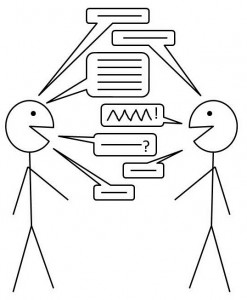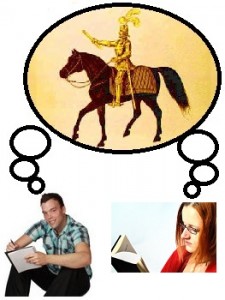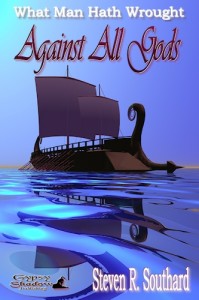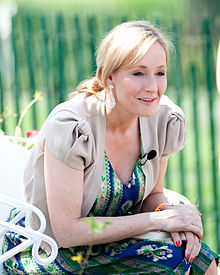Today’s question is about whether story-writers think about characters, plot, or setting when they first conceive the idea for a story. If you’ve written fiction, or thought about doing so, which did you start with?
Of these three story elements, perhaps character is most important to the reader. For readers, vivid and interesting characters linger in the memory long after plot or setting details fade. Some writers form a complete mental image of one or more characters, and then wonder what to have them do, and where to have them do it.
For other authors, the first image is of a setting. The scenery is sharp and distinct in their minds. Perhaps they have a photograph or painting to inspire them, and they decide to craft a tale around that image. Some story contests use pictures to prompt stories.
Still others think of the action or story-line or basic situation first. Only after that do they wonder what sort of people should take those actions and where the events should take place.
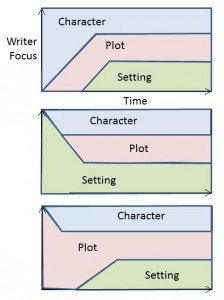 The image is my attempt to illustrate some of the possibilities graphically.
The image is my attempt to illustrate some of the possibilities graphically.
I’m talking here only about the initial impetus for the story. That’s not what the readers reads. In the end, the story must form a complete, coherent, integral whole. Characters, plot, and setting should fit together and complement each other. This is especially true of characters and plot. In a sense, plot and character determine each other. In a well-written tale, those are the only characters for which the plot makes sense, and vice versa. You can’t take any characters at random and fit them in any situation.
I doubt there is any right answer to my question about which element writers should think of first. I’d be shocked to learn if the greatest writers all started with the same element, but I suspect we’ll never know.
I considered the question with respect to my own short stories, and thought at first I had some stories in each category. Then I reflected on each tale one by one and discovered I had thought of plot first in almost every case. There were three stories in which the plot immediately determined the characters. In “Alexander’s Odyssey” and “The Wind-Sphere Ship,” the characters were historical or mythological figures. In the case of “The Steam Elephant,” my sequel to a pair of Jules Verne novels, the characters had been established by Verne.
The single exception to my usual practice of dreaming up a plot first is my story, “Against All Gods,” and I must admit I thought of the setting first there. I’d wanted to set a story aboard a trireme for some time, and also the Wonders of the Ancient World, so I started with those and conjured up a plot and characters to fit those settings.
Not that it matters to readers, who only see your finished product, but which do you think of first—characters, plot, or setting? Let me know by leaving a comment. It’s a question of interest to—
Poseidon’s Scribe

